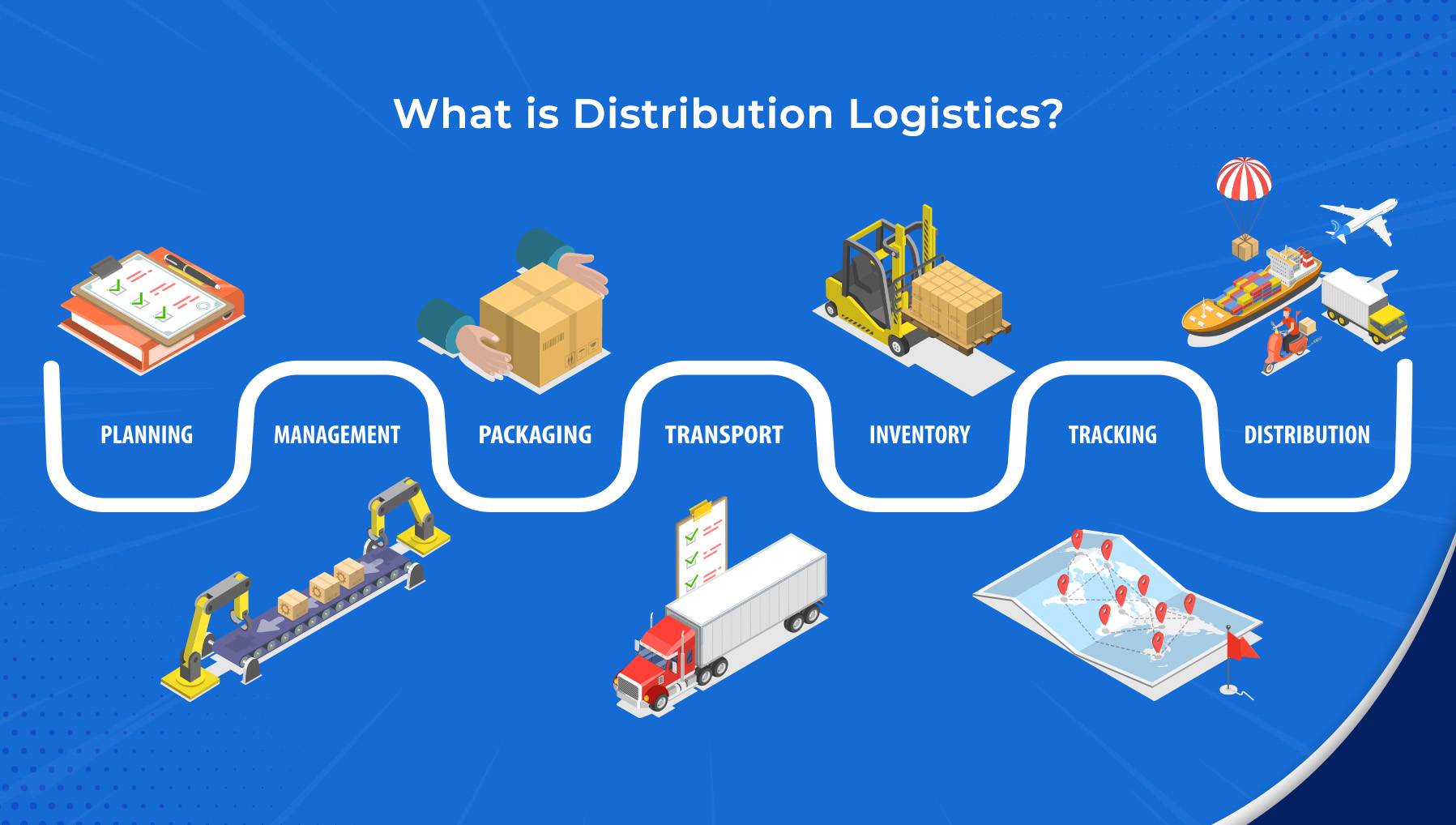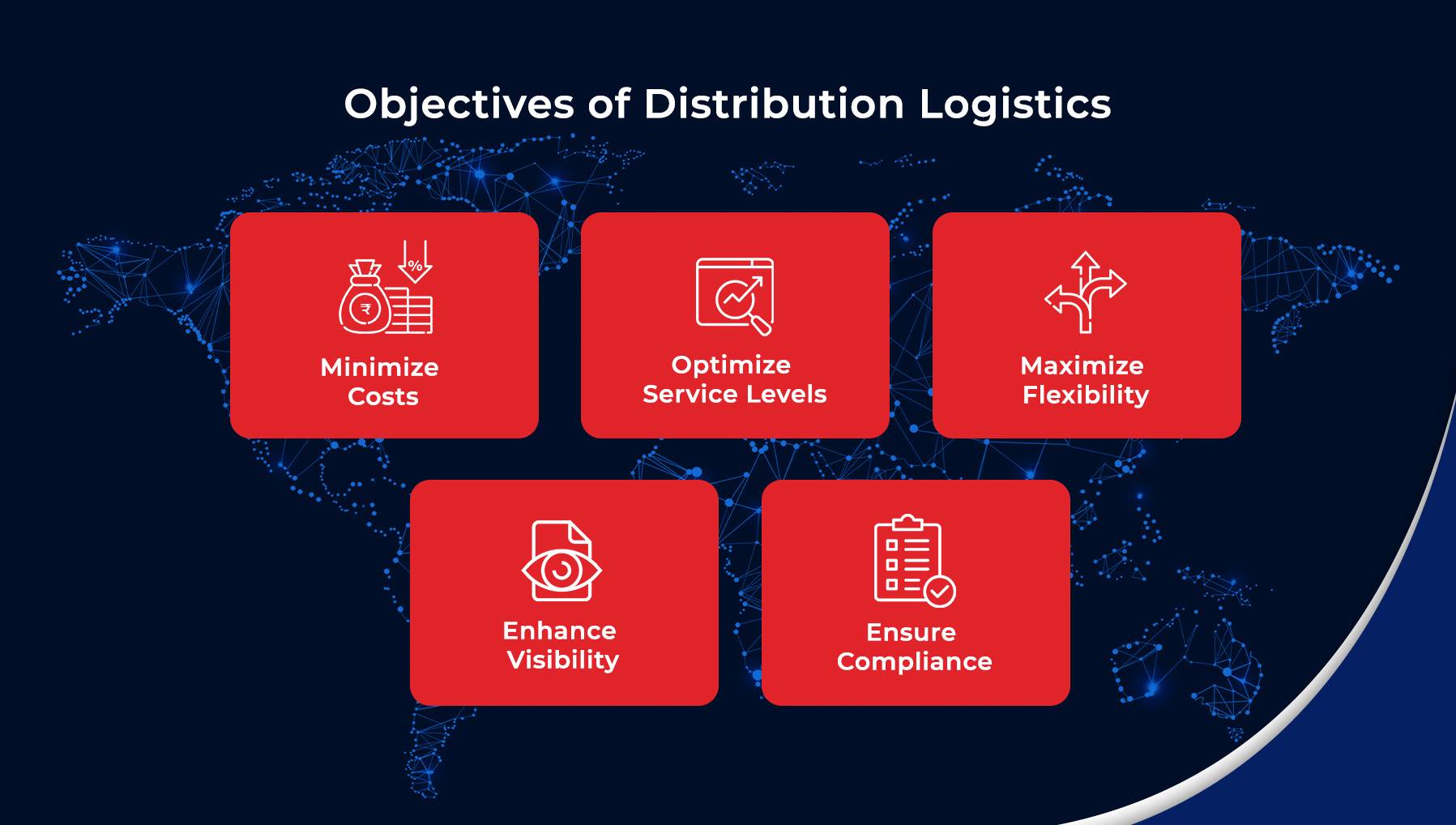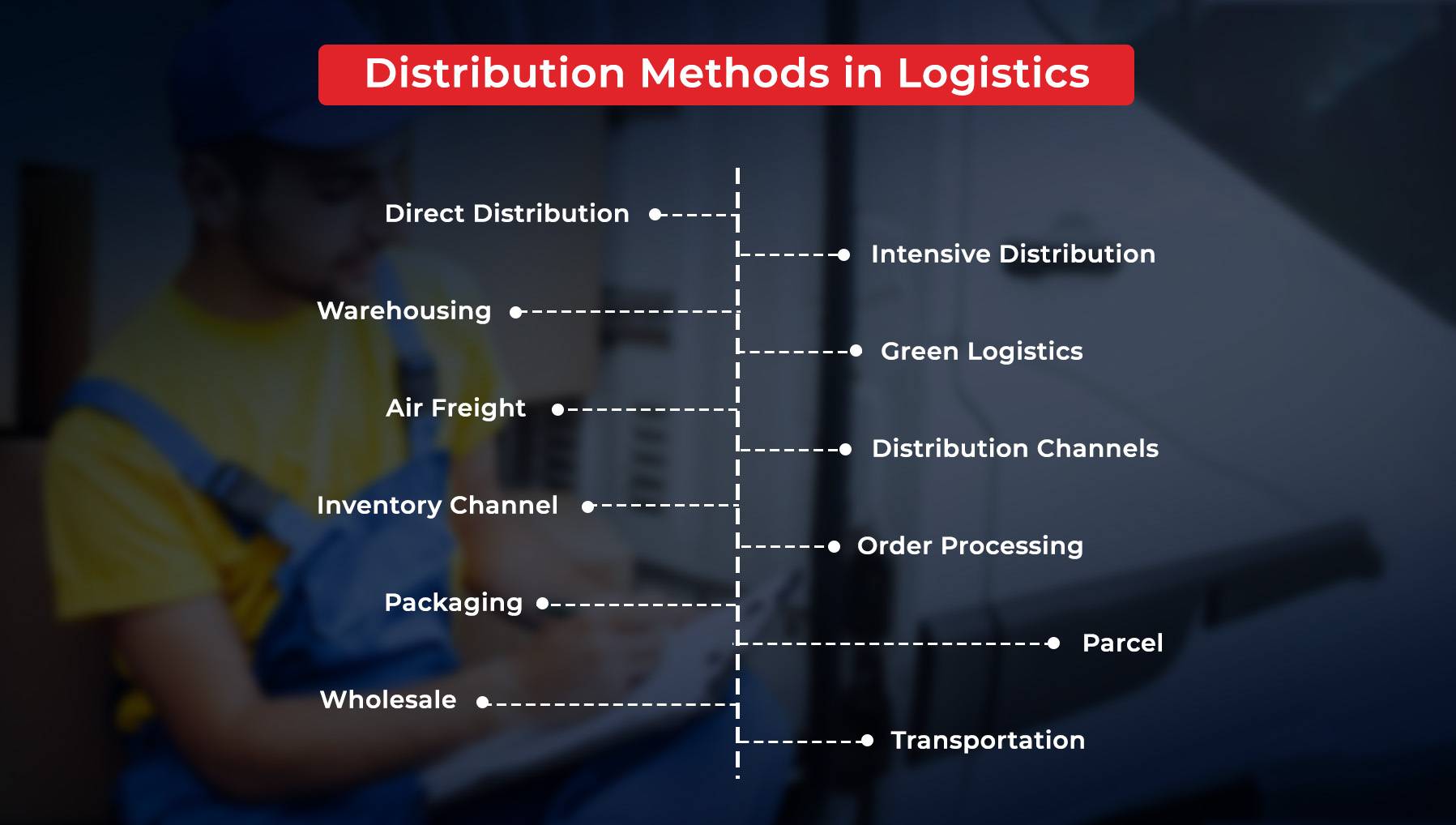
5 Distribution Methods Streamlined Using Logistics Management Software
In today’s fast-paced business environment, effective distribution management is crucial for ensuring timely deliveries, minimizing costs, and maximizing customer satisfaction. Logistics management software plays a pivotal role in streamlining various distribution methods. Thus enabling businesses to operate efficiently and stay competitive in the market. In this blog post, we’ll explore five distribution methods that can be optimized with the help of logistics management software.
Also Read: The Ultimate Guide To Logistics Management Software
What is Distribution Logistics?
Distribution logistics, also known as distribution management or outbound logistics. It refers to the process of efficiently and effectively managing the flow of goods from the point of production or storage to the final destination, which could be a customer, retailer, or distribution center. Distribution logistics plays a crucial role in supply chain management. It ensures that products are delivered to the right place, at the right time, and in the right condition.

Quick Read: How Does Logistics Management Software Offer Reliable Deliveries?
Objectives of Distribution Logistics:
Minimize Costs: It aims to minimize transportation, warehousing, and inventory holding costs while maximizing operational efficiency and resource utilization.
Optimize Service Levels: Distribution logistics seeks to meet customer demand and service level requirements by ensuring timely delivery of products and providing value-added services such as order tracking and customization.
Maximize Flexibility: It helps to adapt quickly to changes in demand, market conditions, or customer preferences by maintaining flexibility in transportation, warehousing, and distribution processes.
Enhance Visibility: Distribution logistics strives to provide real-time visibility into inventory levels, order status, and transportation movements to improve decision-making and customer communication.
Ensure Compliance: It ensures compliance with regulatory requirements, industry standards, and contractual obligations related to product distribution, transportation, and warehousing operations.

Key Components of Distribution Logistics:
Inventory Management:
Efficient inventory management is essential for smooth distribution operations. Logistics management software provides real-time visibility into inventory levels, allowing businesses to track stock levels accurately and avoid stockouts or overstock situations. Features like automated inventory tracking, demand forecasting, and replenishment alerts help businesses optimize their inventory levels and ensure product availability.
Role of Inventory Management with Logistics Management Software in Various Industries
Retail and eCommerce:
Real-time Inventory Tracking
Demand Forecasting
Order Management Integration
Quick Service Restaurants (QSR):
Ingredient Management
Just-in-Time Inventory
Centralized Inventory Control
Courier, Express, and Parcel (CEP):
Shipment Tracking
Route Optimization
Dynamic Routing
Consumer Packaged Goods (CPG):
Batch and Lot Tracking
Shelf Life Management
Promotional Planning
Transportation and Logistics:
Load Planning and Optimization
Carrier Management
Cross-Docking
Order Fulfillment:
Order fulfillment involves processing customer orders accurately and delivering them on time. Logistics management software automates order processing tasks, from order entry to shipment confirmation, reducing manual errors and speeding up the fulfillment process. By integrating with WMS and TMS, businesses can streamline order fulfillment workflows, minimize order processing times, and enhance customer satisfaction.
Role of Order Fulfillment with Logistics Management Software in Various Industries
Retail and eCommerce:
Multi-Channel Order Management
Order Processing Automation
Order Tracking and Status Updates
Quick Service Restaurants (QSR):
Point-of-Sale Integration
Kitchen Display Systems (KDS)
Drive-Thru Order Management
Courier, Express, and Parcel (CEP):
Automated Sorting and Routing
Delivery Route Optimization
Proof of Delivery (POD) Capture
Consumer Packaged Goods (CPG):
Retailer Integration
Promotion Management
Direct-to-Consumer (DTC) Fulfillment
Transportation and Logistics:
Load Consolidation
Dock Scheduling
Cross-Docking Optimization
Warehouse Management:
Efficient warehouse management is critical for optimizing storage space, reducing operating costs, and improving order accuracy. Logistics management software offers advanced warehouse management capabilities, including inventory tracking, slotting optimization, and pick-and-pack workflows. By optimizing warehouse layouts, automating picking processes, and implementing barcode scanning technology, businesses can enhance warehouse efficiency and streamline distribution operations.
Role of Warehouse management with Logistics Management Software in Various Industries
Retail and eCommerce:
Inventory Optimization
Warehouse Layout Optimization
Order Fulfillment Automation
Quick Service Restaurants (QSR):
Ingredient Management
Just-in-Time Inventory
Temperature Monitoring
Courier, Express, and Parcel (CEP):
Parcel Sorting and Routing
Cross-Docking Optimization
Dynamic Slotting
Consumer Packaged Goods (CPG):
Batch and Lot Tracking
Shelf Life Management
Promotion Management
Transportation and Logistics:
Cross-Docking Optimization
Dock Management
Pick-and-Pack Optimization
Transportation Management:
Transportation management involves planning, executing, and optimizing the movement of goods from suppliers to customers. Logistics management software with route optimization, carrier selection, and freight tracking, enables businesses to minimize transportation costs and improve delivery performance. By leveraging advanced algorithms and real-time data analytics, businesses can optimize transportation routes, consolidate shipments, and reduce transit times.
Role of Transportation Management with Logistics Management Software in Various Industries
Retail and eCommerce:
Route Optimization
Carrier Selection
Shipment Tracking
Quick Service Restaurants (QSR):
Delivery Management
Driver Management
Delivery Time Prediction
Courier, Express, and Parcel (CEP):
Load Planning
Route Optimization
Proof of Delivery (POD) Capture
Consumer Packaged Goods (CPG):
Transportation Planning
Freight Consolidation
Carrier Performance Monitoring
Transportation and Logistics:
Fleet Management
Load Optimization
Compliance Management
Reverse Logistics:
Reverse logistics involves managing product returns, repairs, and recycling processes. Logistics management software streamlines reverse logistics operations by automating return authorization, processing returned items, and managing repair workflows. With features such as return merchandise authorization (RMA) tracking and defect analysis, businesses can improve return handling efficiency. Thus reducing processing times, and enhancing customer satisfaction.
Role of Reverse Logistics with Logistics Management Software in Various Industries
Retail and eCommerce:
Returns Management
Return Merchandise Authorization (RMA) Tracking
Refurbishment and Restocking
Quick Service Restaurants (QSR):
Product Recall Management
Waste Management
Equipment Returns and Repairs
Courier, Express, and Parcel (CEP):
Package Returns Handling
Defect Analysis
Salvage and Disposal
Consumer Packaged Goods (CPG):
Product Recalls and Returns
Warranty Claims Processing
Disposal and Recycling
Transportation and Logistics:
Equipment Returns and Repairs
Salvage and Disposal
Warranty Claims Processing
Distribution Methods in Logistics

Direct Distribution:
Selling products directly from the manufacturer to the end consumer, bypassing intermediaries.
Example: A farmer selling organic produce directly to consumers through a farm stand or online store.
Intensive Distribution:
Distributing products through as many channels as possible to reach a wide audience.
Example: A consumer goods company distributing its products through supermarkets, convenience stores, and online marketplaces.
Warehousing:
Storing goods in a centralized facility before distribution to customers or retail outlets.
Example: A logistics company operating a distribution center where products are received, stored, and prepared for shipment to retailers.
Green Logistics:
Implementing sustainable practices in transportation, warehousing, and distribution to minimize environmental impact.
Example: A logistics company using electric vehicles for deliveries and optimizing delivery routes to reduce fuel consumption and carbon emissions.
Air Freight:
Transporting goods via air cargo services for fast and efficient delivery over long distances.
Example: A technology company shipping high-value electronics components via air freight to meet tight production deadlines.
Distribution Channels:
Routes or paths through which products reach customers, including direct sales, wholesalers, retailers, and online platforms.
Example: A fashion brand distributing its products through company-owned retail stores, department stores, and e-commerce websites.
Inventory Channel:
Managing the flow of goods through various stages of the supply chain, from production to consumption.
Example: An electronics manufacturer maintains optimal inventory levels at each stage of the supply chain to meet customer demand while minimizing carrying costs.
Order Processing:
Managing customer orders from receipt to fulfillment, including order entry, picking, packing, and shipping.
Example: An online retailer processing customer orders through an automated system that tracks inventory levels, allocates stock, and generates shipping labels.
Packaging:
Designing and creating packaging materials to protect and transport goods safely during distribution.
Example: A food manufacturer uses recyclable and biodegradable packaging for its products to minimize environmental impact.
Parcel:
Sending small packages or parcels via postal or courier services for delivery to customers or recipients.
Example: An e-commerce retailer shipping individual orders to customers using parcel delivery services like FedEx or UPS.
Wholesale:
Selling goods in large quantities to retailers or other businesses for resale to end consumers.
Example: A beverage distributor supplying cases of soft drinks to grocery stores and convenience stores for resale to consumers.
Transportation:
Moving goods from one location to another using various modes of transportation, such as trucks, trains, ships, or planes.
Example: A logistics company transporting goods from a manufacturing facility to distribution centers using a fleet of trucks.
Best Logistics Management Software for Streamlined Distribution Management
Logistics management software plays a crucial role in streamlining various distribution methods. It helps businesses to optimize inventory management, order fulfillment, warehouse operations, transportation management, and reverse logistics processes. By leveraging advanced features and capabilities, businesses can improve operational efficiency, reduce costs, and enhance customer satisfaction in today’s competitive marketplace.
Don’t Miss: Key Features To Consider In Logistics Management Software
Embracing logistics management software like LogiNext is essential for businesses looking to stay ahead in the rapidly evolving distribution landscape. Our comprehensive tool allows us to streamline distribution processes and enhance supply chain performance. Whether it’s a retail and eCommerce business seeking to optimize delivery routes, a Quick Service Restaurant (QSR) aiming to streamline food delivery operations, or a Courier, Express, and Parcel (CEP) service managing package tracking and delivery, we offer tailored solutions to meet specific industry requirements.
Download Whitepaper:
With 200+ customers, spanning 50+ countries, we are the preferred choice for businesses seeking a reliable, scalable, and future-ready logistics management software solution. Schedule a demo to learn more about our offerings by clicking the red button below.
94







@LogiNext